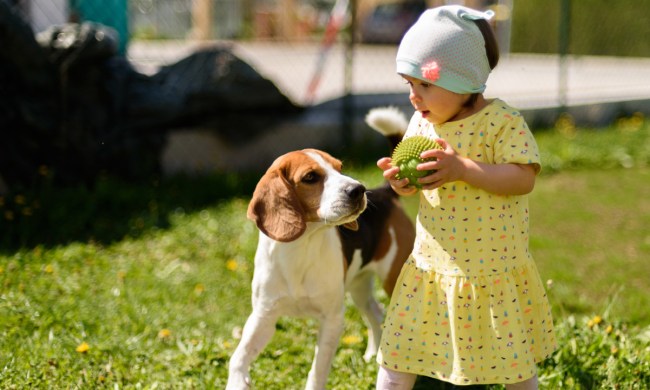Whether you’re a lifelong pet parent or you’ve recently adopted your first fur baby, you know that pets can be incredibly expensive. Between food, vaccinations, toys, bedding, piddle pads, miscellaneous medical expenses, litter, and treats, it’s no wonder that one out of every four pet owners struggles with pet debt. Managing your spending habits is an essential life skill, and it becomes even more important when you’re feeding extra mouths on a budget. From cutting initial costs to improving long-term cash flow, we’re here to help you save money on your furry friends with our list of life hacks.

How to save money on pets
Grooming costs and pet sitters can break the bank. Here are a few tips that can help you save in the long run.
1. Adopt, don’t shop
Purebred pets are expensive, sometimes costing several thousand dollars. Even if you have your heart set on a purebred German shepherd or Russian blue, there are ways to get your dream pet without spending so much money. Check out the AKC Rescue Network or Petfinder’s Breed Rescue. Many people buy a certain breed only to realize their new dog or cat isn’t a great fit with their lifestyle. You can also contact your local shelter and ask them to keep an eye out for the breed you want. Adopting saves an unwanted fur baby from a tragic end and saves you a ton of money.
2. Buy in bulk
From food and supplies to medication and supplements, most items are cheaper if you buy in bulk. If you can’t possibly use up everything you purchase before the expiration date, ask a fellow pet owner to go halves with you on your purchase. You’ll save money and cut down on waste.

3. Research your food
You want to feed your pet the best diet you can afford, but pet food is costly. However, once you’ve found a food they like, you can start looking for the best price. Look for coupons and website deals, and consider shopping through a portal website like Swagbucks, which gives you cash back on purchases.
4. Get into DIY
With the advent of YouTube, TikTok, and Instagram, learning new skills is as easy as entering a search term and watching a video. You can learn how to groom your pets at home thanks to myriad free tutorials. Some dollar stores offer pet grooming supplies, which can also save cash.
5. Ask a friend to babysit your pet
Leaving town? Boarding your pet can be expensive, especially if you have more than one. Consider asking a trusted friend or family member if they’ll keep an eye on your pet while you’re away. You also can find budget-friendly help on sites like Rover. Don’t be afraid to ask your friends whom they use to watch their pets. You could even swap help with friends — you’ll help them repaint their bedroom if they watch your dog for a week.
6. Save money with subscriptions
Once you’ve found your pet’s favorite food, you can sign up for auto-ship with Chewy, which saves you up to 10% on recurring orders. You’ll also save up to $20 on your first auto-ship order. Chewy’s prices are also lower than most big-name pet supply stores, and their responsive customer service means you never have to worry about your delivery getting lost in the mail.
7. Ensure you store your food properly
Most of us buy the largest bag of food we can carry and dump it into a food bin. Turns out, we’ve all been doing it wrong. You should store the food bag inside the container, and the reason makes a lot of sense. If you’ve been dumping food into the same container for months without cleaning it out properly, your pet’s new food is coming into contact with crumbs from old food. Yuck! Make sure your storage bin has an airtight seal to keep your pet’s food fresh. When the bag is empty, wash and dry your container to get rid of old crumbs and oily residue.
8. Save money on pet insurance
If you’re going to insure your pet, make sure to do your research. The best time to insure your pet is when they’re young and healthy with no preexisting conditions. You’ll pay lower premiums, and your pet is almost guaranteed to qualify.

9. Spay and neuter as soon as possible
Nothing is more costly than having an unexpected litter. You can search for low-cost spaying and neutering options in your area — or ask your veterinarian if they know of any affordable clinics. Yes, there is an upfront cost associated with spaying and neutering, but you’ll save a small fortune in the long run.
10. Keep your pet healthy
One of the easiest and most effective ways to save money is simply by keeping your pet healthy and active. A sedentary lifestyle makes pets susceptible to a host of medical issues like obesity, arthritis, diabetes, and heart problems. Your pet will live a longer, healthier life on a nutritious diet with plenty of exercise.
Being a pet parent is rewarding and full of fun, but it can also be costly. Make smart purchases, don’t be tempted by fancy toys and gadgets your pet doesn’t need, and do plenty of research to make sure you’re getting the best deal. With a bit of coupon hunting, bulk buying, and creativity, you can keep your pet happy and healthy without breaking the bank.



